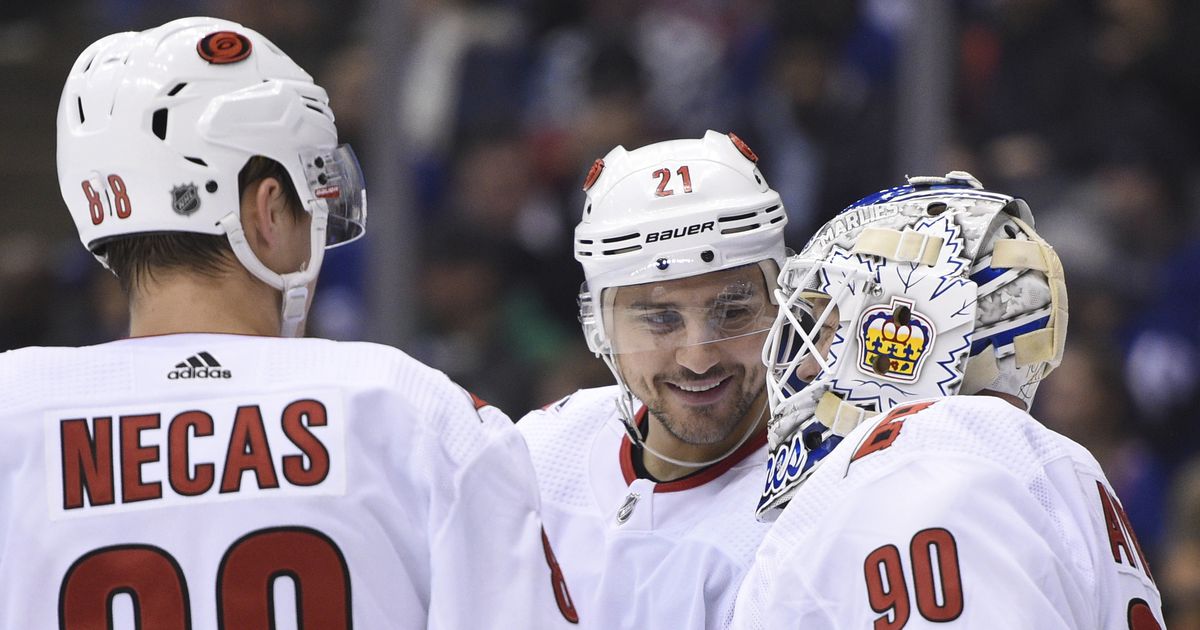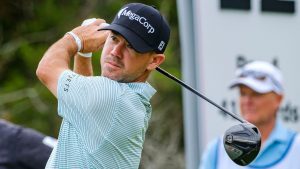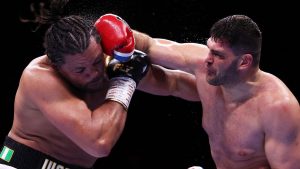Emergency goalie protocol talk on tap for NHL GMs meeting


When a 42-year-old Zamboni driver entered as an emergency goaltender and won an NHL game, it became one of the best stories in sports.
But David Ayres going from practicing with the Toronto Maple Leafs to playing against them in the thick of a playoff race also generated debate about what should happen in those rare instances. So emergency goalie protocol will be a significant topic of conversation when general managers open their annual March meeting Monday in Boca Raton, Florida.
“This was a perfect storm,” Dallas Stars GM Jim Nill said. “You never think it’s going to get to the point where you get two guys hurt, but it did happen. … Is it something that happens once every 20 years? Is it a great story? That’s what we’ll have to discuss.”
Ayres is not employed by the Maple Leafs and works as operations manager at the former Maple Leaf Gardens in Toronto. He has for years been one of the organization’s on-call practice goalies and even backed up for their top minor league affiliate during a game.
Despite going in for Carolina in a blue and white mask and equipment, Ayres stopped eight of the 10 shots he faced to help the Hurricanes beat the Maple Leafs. Because of that result, Pittsburgh Penguins GM Jim Rutherford didn’t think much about the oddity of the situation.
“I guess if the result of the game had’ve gone the other way, I might’ve put more thought into it,” Rutherford said. “What’s going on now is everybody’s talking about what if, a lot of what ifs. We can talk in circles about what ifs and everything. I don’t have an issue with what just took place. But, like always, I’m open to listen to everybody’s thoughts and what everybody’s ideas are.”
The current rule of each arena making an emergency goalie available for a game stemmed from 2015 incident in Florida that almost caused an assistant coach to put on the pads and play. Because an emergency goalie has only been required to play twice — Ayres and Scott Foster for Chicago in 2018 — executives and officials might find the current protocol better than the old-school notion of making a skater go in net.
“We said it’s unfair to the guy on the ice to have to go in there,” St. Louis Blues GM Doug Armstrong said. “It didn’t make any sense. So, now we said let’s see if there’s someone locally that can go in the net. It’s difficult to find 31 A-plus goalies that go to 41 home games a year. There’s always ways to try and see if we can improve it.”
Armstrong said he wouldn’t be in favor of the expense of carrying a third goalie all season, which would also be impractical. One possibility calls for each team to have a full-time employee at home and on the road ready to serve in goal if needed.
“What, do you go find a guy that’s not too bad of a goalie that can practice every day and work in your marketing department or wherever he’s working?” Nill said. “He’s got to travel with the team all the time. We look at those scenarios. With everything, there’s CBA issues involved, there’s labor laws involved, so just different things that you have to check off the boxes before you can decide what to do.”
Deputy Commissioner Bill Daly said the NHL has to work with the Players’ Association on collective bargaining concerns, like determining who counts as a player. Those complications make it no easy fix with perhaps no perfect solution.
“Obviously we want what’s best for the game, and we want to make sure people aren’t putting themselves in danger by playing goal in a National Hockey League game,” Daly said. “That’s obviously something we have to continue to work through.”
Some other topics that could come up when GMs meet Monday-Wednesday:
— Some offside reviews are disputable because a player’s skate might be in the air, making it unclear even on replay. Coach’s challenges are down after a rule change making an unsuccessful challenge a penalty, but this is more about officials getting it right.
“The offside rule I think is going to be discussed again where just breaking the plane would make it a little bit easier to view it on the video,” Rutherford said. “It’s always hard for the linesmen regardless which way we do this because everything’s happening so fast.”
— A few seasons into hybrid icing, Rutherford is concerned there are too many icing stoppages because players are skating back slower to get the call from linesmen.
“It appears to me that we now have more icings than are necessary where a guy going back for a puck may turn the opposite way where he could’ve got the puck or he may just play the opposing player at the blue line when he could’ve got the puck,” he said. “I have to find out if other GMs feel the same way, but if we do, maybe tighten that up a bit.”
— Commissioner Gary Bettman said recently the NHL isn’t planning to make radical changes to its playoff format like the NBA is considering. But with two of the top three teams in the league — Boston and Tampa Bay — playing in the same division, the current divisional format of those teams potentially facing off in the second round might again be questioned.
“We were in 1 to 8 (in each conference) and there was a disparity in travel and so we went to this format,” Armstrong said. “There’s going to be pros and cons to whatever decision is made. I understand the logic of talking about 1 to 8, but that’s an easy talk in the Eastern Conference. It’s a difficult talk in the Western Conference.”
— In-arena medical procedures worked when Blues defenseman Jay Bouwmeester collapsed on the bench earlier this month with a cardiac event. Because of the success of those protocols in situations involving Jiri Fischer, Rich Peverly and Bouwmeester, it’s not an area that needs immediate attention but will continue to be looked at to see what can be better.
“It’s not something that I think anyone looks at and says, ‘OK, this is perfect’ because it’s such an important thing,” Armstrong said. “It’s not something that will just stay stagnant. We’ll always try to evolve to make sure player safety and fan safety is at the forefront of our game.”





